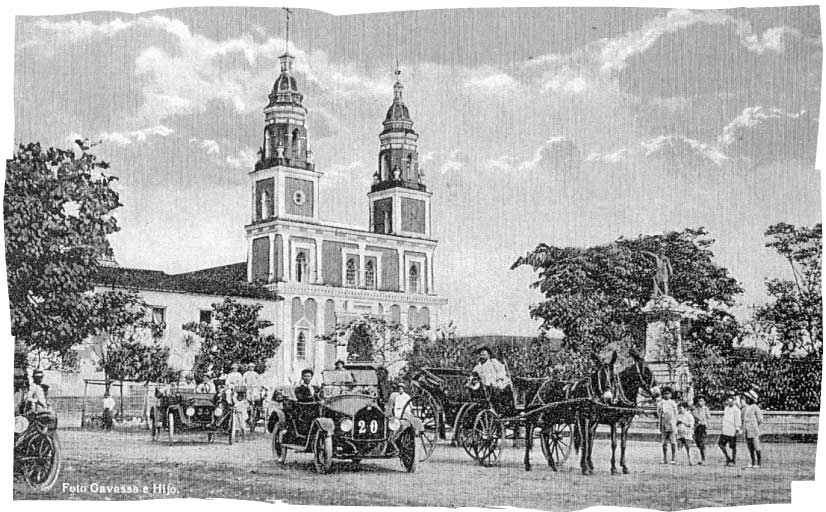Home
B
U
C
A
R
A
M
A
N
G
A

History
Bucaramanga, often referred to as the “City of Parks,” is a dynamic and historically rich city located in northeastern Colombia. Its history is a fascinating tapestry of indigenous heritage, Spanish colonization, battles for independence, and modern urban development. The earliest and most significant town established by Spanish colonists in the region was Girón, and it was not until the early 19th century that Bucaramanga (created on December 22, 1622) overtook Girón in terms of population and economic importance. German explorers and merchants were the city’s main attractions in the 1860s and 1870s, and tensions between the newcomers and established businessmen erupted in 1879 following the occurrence of “La Culebra Pico de Oro” (“The Gold Beak Snake”). With the political reform of 1886, Bucaramanga replaced Socorro as the departmental capital. The civil war of 1899–1902, often known as the Thousand Days War, damaged the region but not the city itself, resulting in Bucaramanga’s low growth in the first half of the 20th century. The largest and current capital of Colombia’s Santander department is Bucaramanga. With a population of 613,400, Bucaramanga is the ninth most populous city in Colombia and has the fifth-largest GDP. It also has the lowest unemployment rate. The nicknames “La Ciudad de Los Parques” (“The City of Parks”) and “La Ciudad Bonita de Colombia” (“Colombia’s Beautiful City”) were given to the city because it has more than 160 parks, which are dispersed throughout the entire area.
- Pre-Colonial Period: Long before the arrival of Spanish colonizers, the region around Bucaramanga was inhabited by indigenous peoples, including the Guanes. These indigenous groups had established settlements and developed their own cultures and societies. They engaged in agriculture, pottery, and metalwork, leaving behind a legacy of ancient traditions.
- Spanish Colonization: Bucaramanga was founded on December 22, 1622, by Spanish explorer. It was established as a Spanish colonial town in the Viceroyalty of New Granada. Spanish colonization brought significant changes to the region. The Spanish influence transformed the local way of life, introducing new crops, animals, and religious practices.
- Independence: Bucaramanga played a vital role in the fight for Colombian independence from Spanish colonial rule. In the early 19th century, patriots and revolutionaries, including Francisco de Paula Santander, who would later become Colombia’s second president, were active in the region. The Battle of Pienta, fought near Bucaramanga in 1817, was a significant event in the struggle for independence. This battle marked a decisive victory for the patriots and contributed to the overall independence movement in Colombia.
- 19th and 20th Centuries: Bucaramanga continued to grow and develop during the 19th and 20th centuries. The city became an important center for commerce and trade in the region. It played a role in Colombia’s political landscape and contributed to the country’s stability.
- Modern Times: In recent decades, Bucaramanga has experienced remarkable urbanization and economic growth. The city’s economy is characterized by its diversity, with key sectors including healthcare, education, commerce, and industry. Bucaramanga is renowned for its healthcare services, earning the nickname “Colombia’s Health City.” It boasts numerous hospitals and medical facilities of high standards.
The city is also a hub for education, home to several prestigious universities and educational institutions. The Universidad Industrial de Santander (UIS), founded in 1948, is one of the most prominent universities in the region. One of Bucaramanga’s distinct features is its climate, often referred to as the “City of Parks” because of its abundant green spaces and pleasant weather. The city’s numerous parks and open areas offer residents and visitors places to relax and enjoy nature. Culturally, Bucaramanga hosts a variety of festivals and events throughout the year. The Festival de la Cumbia, dedicated to the traditional Colombian dance form known as cumbia, is a vibrant and colorful celebration that showcases the city’s cultural heritage. In terms of the economy, Bucaramanga is a thriving industrial center known for manufacturing products such as textiles, footwear, and automotive parts. It has become an attractive destination for business and investment. In conclusion, Bucaramanga’s history is a story of resilience and transformation. From its indigenous roots to its crucial role in the fight for Colombian independence and its modern status as a center of commerce, education, and healthcare, the city has evolved significantly. Bucaramanga continues to grow while preserving its historical and cultural heritage, making it a vibrant and inviting place to live and visit in Colombia.